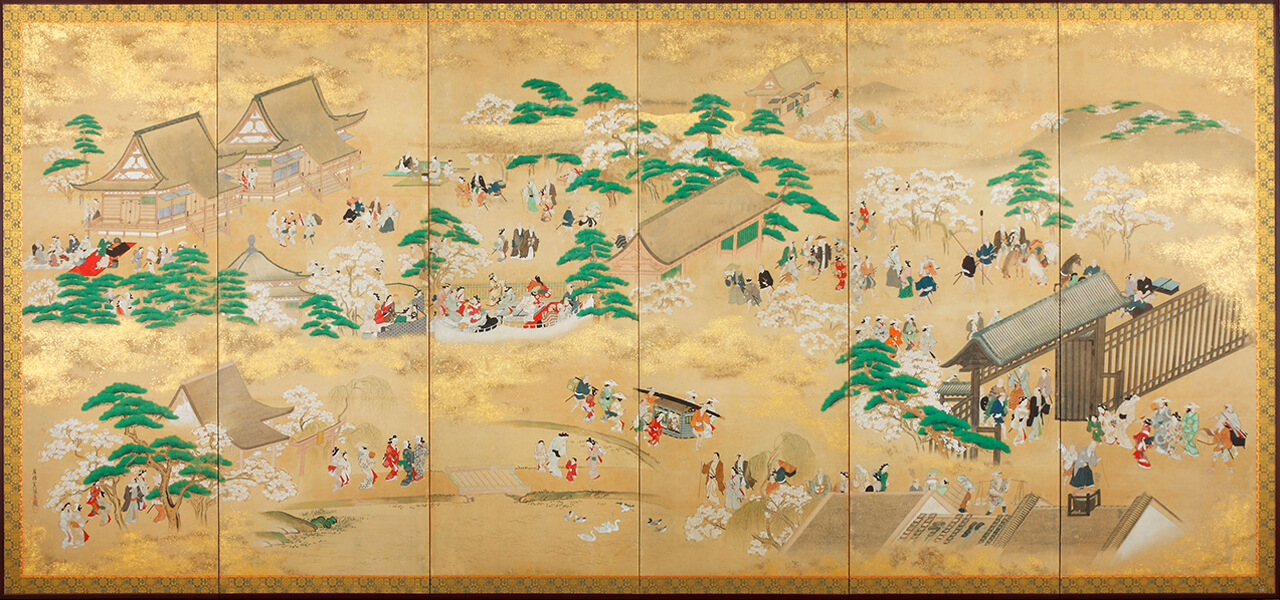Viewing Cherry Blossoms at Ueno Park and Autumn at Asakusa
DATA
- Artist:
- Hishikawa Moronobu
- Historical era:
- Edo (17th century)
- Material:
- printed, sprinkled gold on washi paper
- Medium:
- Pair of six-fold screens
- Theme:
- High Resolution Facsimile of Japanese Art Abroad
- Size:
- Each screen H179.9 × W382.3 cm
- Recipient:
- Natural History Museum and Institute, ChibaMAP
[Original]
- Current owner:
- The Freer Gallery of Art of the Smithsonian Institution
- Material:
- ink, color, and sprinkled gold on washi paper
DESCRIPTION
This work was done by Hishikawa Moronobu who is known for establishing the block print as an art form that is to be appreciated as a single picture, and as the founder of Ukiyoe prints. The right screen depicts an autumn scene, bustling with prayer goers to the Sensoji Temple, scenes of Asakusa, and folks enjoying a boat ride along the Sumida River. The left screen depicts spring with merry makers observing cherry blossoms, and famous sites around Ueno Kaneiji and Shinobazu pond. The two screens illustrate how commoners enjoyed the seasons in the Edo era, while the brilliant colored garments and hair styles depict what life was like at that time. Moronobu drew the lifestyle of commoners during the Edo era in great detail, and created many artifacts including books and paintings by both woodblock and hand. His best known works are Mikaeri Bijin ("A Beauty Looking Back"), and Kabukizu Byobu ("Kabuki Drama").


